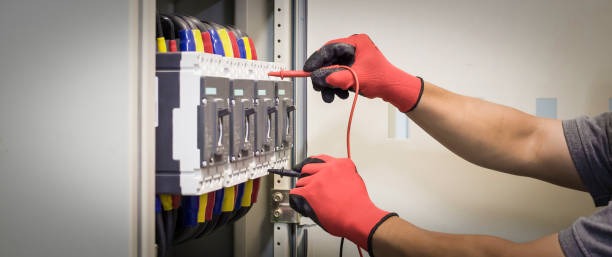
ELECTRICAL SAFETY TESTS
Electrical Safety Testing is a series of tests and evaluations performed to ensure that electrical and electronic devices, systems, and installations operate safely and do not pose any risk of electric shock, fire, or other hazards to users. These tests are carried out during the design, manufacturing, and installation phases of products and are critically important for verifying compliance with relevant safety standards.
Main Objectives of Electrical Safety Testing:
Protecting users from electric shock: Verifying that the device's insulation is adequate and that there is no access to dangerous voltages.
Preventing fire risks: Ensuring that the device does not overheat, short-circuit, or arc, which could lead to fires.
Ensuring the device functions correctly and safely: Verifying that the electrical components and circuits of the device operate correctly and that there are no malfunctions or damage.
Ensuring compliance with legal regulations and standards: Documenting that products comply with relevant national and international safety standards (IEC, EN, UL, CSA, etc.).
Major Electrical Safety Tests:
Ground Continuity (Earth Continuity) Test: Verifies that there is a low-resistance connection between the metal chassis of the device and the ground line. This ensures that in the event of an electric fault, the current will flow safely to the ground.
Insulation Resistance Test: Measures the resistance of the insulation between the live parts of the device and its chassis. A high resistance value indicates good insulation and reduces the risk of electric shock.
Leakage Current Test: Verifies that the leakage current flowing to the chassis or ground line during normal operating conditions is within acceptable limits.
High Voltage (Hipot/Dielectric Withstand) Test: Tests the ability of the device's insulation to withstand high voltages. The applied high voltage for a specified period must not cause any breakdown or flashover in the insulation.
Functional Tests: Verify that all functions of the device operate correctly and safely.
Power Cord and Plug Tests: Verify that the power cord and plug are undamaged, correctly polarized, and have sufficient current carrying capacity.
Temperature Rise Test: Verifies that the device does not overheat during normal use and that its components operate within permissible temperature limits.
Electromagnetic Compatibility (EMC) Tests: Verify that the device operates compatibly with other electronic devices and does not emit electromagnetic interference (EMI). These tests are usually considered separately from electrical safety tests but are closely related.


Why Choose Kompass Europe?
Electrical safety is a critical issue that should never be taken lightly. As Kompass Europe, we offer reliable and comprehensive solutions in electrical safety testing. Here are some compelling reasons to choose us:
Expertise and Experience
Comprehensive Testing Services
State-of-the-Art and Accredited Laboratory
Fast, Reliable, and Accurate Results
Customer-Focused Approach
Contact Us for Your Electrical Safety Testing.
We offer affordable and effective solutions tailored to your needs.
The information presented on this website does not constitute legal advice and is intended for informational purposes only. KompassEurope.com.tr assumes no responsibility for any errors or omissions in the information contained on this website. Any decisions made or actions taken by the reader based on this information are solely at the reader's own risk, and KompassEurope.com.tr shall not be held liable for any legal consequences arising from such decisions or actions. Readers are strongly advised to seek professional legal counsel regarding their specific circumstances and concerns.
© 2025 Kompass Europe. All rights reserved. The contents of this website belong to Kompass Europe and are protected by copyright laws. Copying, publishing, distributing or any commercial use of the information on the website is possible only with written permission. By using this site, you agree to our Terms of Use and Privacy Policy.
